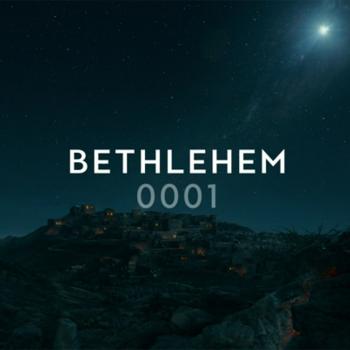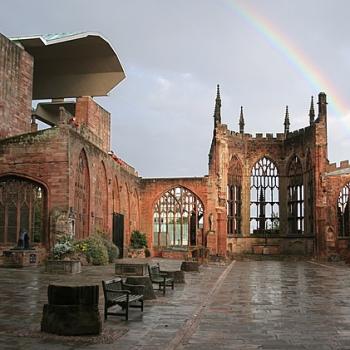Editors' Note: This article is part of the Patheos Public Square on Rites of Passage. Read other perspectives here.
From the moment we are born, our lives are focused around rituals to honor life's transitions. Most religions even follow a prescribed script for different stages of life beginning with birth, moving from childhood to adulthood, and transitioning from single to married life. We seem to cross each bridge of change quite easily, navigating any challenges with the guidance of others. At some point, however, we will reach the final passage for our loved ones: death. It's an uncomfortable topic, and one that many people don't handle well. But, I believe we need to honor death in the same way we celebrate life. Understanding why religious rituals have been created and following them can guide us into the final transition more easily.
I experienced death for the first time when I was twenty-one years old. My grandfather died at home after a battle with cancer. Peeking into his sun-filled bedroom, I watched as my mother whispered words of encouragement into his ear as he quietly struggled for breath. She acknowledged his wonderful life and assured him that our family would honor him in death. Holding his pale wrinkled hand, she seemed to give this once robust man permission to let go. A few short hours later, as our family gathered for Shabbat, he took his final breaths.
As my mother promised, we followed the Jewish rituals of burial, sometimes referred to as hesed shel emet (true loving-kindness). Just as we care for our loved ones in life, the caring we give to the dead is the most sincere and selfless act we can perform because they will not be able to repay us. The very specific way that Jewish tradition guides mourning has been created to recognize the tragic loss and guide the living back into life.
Before the Funeral
Jewish tradition follows specific observances and practices beginning with the family. Before the funeral, the focus is completely on the one who has passed away. First, a hevra kadisha (holy society of volunteers) will prepare the deceased for burial, showing the utmost respect to the body. The body is cleaned, purified with water, and dressed for burial in a simple white linen cloth. No special attire or cosmetics are worn, as Jews believe that everyone should stand equal before the eyes of God. At no time, will the deceased be left alone. Family or volunteers can also sit with the body and a candle is lit.
Unlike many religions, Jews do not embalm as it delays the natural process of decomposition. Cremation is also traditionally forbidden because of the Torah commandment — " dust you are, and to dust you will return." In Israel, the dead are wrapped only in a tallis (prayer shawl) but in the United States, where a casket is required, it must be a simple wooden casket without any adornments. The casket is always closed and there is no viewing of the body, as tradition states that staring at someone who cannot look back is disrespectful to the deceased.
Funeral and Burial
Jewish funerals have to happen very shortly after death, typically no more than forty-eight hours. This practice may have come from biblical times when the hot climate in Israel caused bodies to decompose rapidly.
Flowers are not typically found, as they wilt and they are considered an unnecessary adornment. People often wear black, somber clothing to show they are in mourning and to show respect. The rabbi will recite prayers and family members will give eulogies, but all with a tone of respect.
The term for the funeral or the procession is lavayah, meaning to escort, as it is also a mitzvah for the community to share in this experience together. Finally, mourners will arrive at the graveside.
At my grandfather's funeral I was standing behind my grandmother as the rabbi handed her a shovel. He showed her how to take scoops of dirt and toss them down onto the casket that had been lowered into the ground. Then, instead of handing the shovel to my mother, she put it on the ground, a tradition of not passing along grief. I listened to the thud of dirt on the casket and cringed at its finality. Symbolically this would give all of us who were mourning some closure to know that we participated in his burial and was a mitzvah at his final resting place.
At the end of the funeral, our friends and extended family formed a shura (double line) facing each other and making a pathway for mourners to leave. I heard whispered greetings and understood that this was supposed to be the first time mourners offered consolation, as the focus now moves to those still living.
Mourning
Once the funeral is over, the family will begin the process of shiva, a seven-day process to fully grieve. So many people are confused about the process of mourning. People don't know how to talk about death, how to act in a house of shiva or around mourners. Jewish ritual practice gives very specific instructions to help. It's all there for us, if we choose to follow it.




